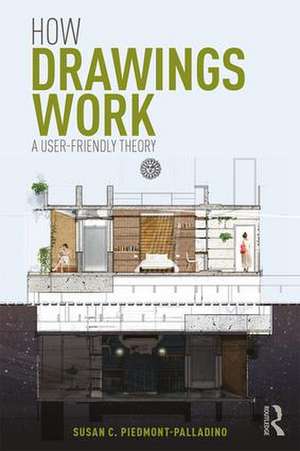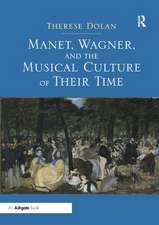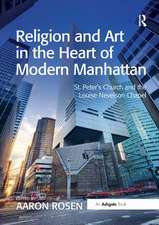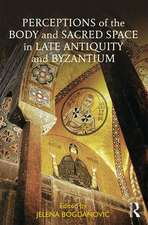How Drawings Work: A User-Friendly Theory
Autor Susan Piedmont-Palladinoen Limba Engleză Paperback – 7 ian 2019
| Toate formatele și edițiile | Preț | Express |
|---|---|---|
| Paperback (1) | 371.76 lei 3-5 săpt. | +22.85 lei 4-10 zile |
| Taylor & Francis – 7 ian 2019 | 371.76 lei 3-5 săpt. | +22.85 lei 4-10 zile |
| Hardback (1) | 764.20 lei 6-8 săpt. | |
| Taylor & Francis – 15 ian 2019 | 764.20 lei 6-8 săpt. |
Preț: 371.76 lei
Nou
Puncte Express: 558
Preț estimativ în valută:
71.15€ • 74.00$ • 58.73£
71.15€ • 74.00$ • 58.73£
Carte disponibilă
Livrare economică 25 martie-08 aprilie
Livrare express 08-14 martie pentru 32.84 lei
Preluare comenzi: 021 569.72.76
Specificații
ISBN-13: 9781138692978
ISBN-10: 1138692972
Pagini: 198
Ilustrații: 55 Line drawings, color; 27 Halftones, color; 82 Illustrations, color
Dimensiuni: 156 x 234 x 10 mm
Greutate: 0.46 kg
Ediția:1
Editura: Taylor & Francis
Colecția Routledge
Locul publicării:Oxford, United Kingdom
ISBN-10: 1138692972
Pagini: 198
Ilustrații: 55 Line drawings, color; 27 Halftones, color; 82 Illustrations, color
Dimensiuni: 156 x 234 x 10 mm
Greutate: 0.46 kg
Ediția:1
Editura: Taylor & Francis
Colecția Routledge
Locul publicării:Oxford, United Kingdom
Public țintă
Professional, Professional Practice & Development, and UndergraduateCuprins
Preface
Bibliography
Image credits
- Introduction: An irresponsibly brief history of drawing(s)
- Rhetoric and persuasion
- Direction of fit
- Matching the world
- Wishes and instructions
- The Elevation: the world’s most dangerous drawing
- Into the uncanny valley
- Conclusions and Questions
Bibliography
Image credits
Notă biografică
Susan C. Piedmont-Palladino is a professor of Architecture, Coordinator of Urban Design, and the Director of Virginia Tech’s Washington / Alexandria Architecture Center in Alexandria, Virginia, USA. She is also a curator at the National Building Museum in Washington, District of Columbia, and a registered architect in the Commonwealth of Virginia, USA.
Recenzii
"Susan Piedmont-Palladino provides wonderful insight into the various types and functions of drawings. This valuable book is both practical and inspirational and should be read by architects as well as students of design and others interested in built environments."
Frederick Steiner, Dean, School of Design, University of Pennsylvania
"No need to be an architect to appreciate this erudite, illustrated exploration of communication through drawing. Susan Piedmont-Palladino critically analyzes drawing types, purposes, pitfalls and history, from cave art to digital modeling. Yet her insightful, intellectually rigorous writing, often punctuated with 'just-between-you-and-me' asides, is witty and charmingly conversational."
Roger K. Lewis, FAIA, Architect & Planner, Professor Emeritus, University of Maryland School of Architecture, Planning and Preservation, Columnist, The Washington Post
"Susan Piedmont-Palladino has written a book about drawing unlike any other. She recounts her own discovery of the depth and diversity of architectural drawings, exploring analogies with language and finding parallels with art history. It is an accessible book and a deeply personal and philosophical one as well, and it is well worth the time it takes to read."
Professor Thomas Fisher, Director of the Minnesota Design Center at the University of Minnesota
"Piedmont-Palladino takes you on an unexpected journey into a world of groundbreaking scholarship illuminated with startling 'aha' moments and profoundly witty observations. She makes you think and she makes you laugh—sometimes sequentially, sometimes simultaneously. If you have ever seen a drawing or made a drawing, you will want to read this book. Now that I have read it, how I think about language and about drawing will never be the same again."
Chase W. Rynd, Executive Director and CEO, National Building Museum
"How Drawings Work is an altogether marvelous contribution to the literature on representation. Moving with agility across a range of perspectives—aesthetic philosophy and linguistic theory, architectural history and professional practice, science fiction and commercial advertising—Susan Piedmont-Palladino crafts a series of insightful arguments on the changing nature of architectural communication."
Nancy Levinson, Places Journal
"Piedmont-Palladino understands how architects’ use tools not just to design but find our way through the world. This wise exploration expands our understanding of how and why architects communicate—to each other and those who inhabit our creations—and deftly challenges the false choice between the analog and the digital by reframing our understanding of both."
Phil Bernstein, Associate Dean and Senior Lecturer, Yale School of Architecture and former Vice President at Autodesk
"Susan Piedmont-Palladino's boundless imagination shines in her new book. With grace and wit, she reveals the intellectually rich history of the architect's most basic tool--the drawing. Utterly delightful."
Lance Hosey, author of The Shape of Green: Aesthetics, Ecology, and Design
Frederick Steiner, Dean, School of Design, University of Pennsylvania
"No need to be an architect to appreciate this erudite, illustrated exploration of communication through drawing. Susan Piedmont-Palladino critically analyzes drawing types, purposes, pitfalls and history, from cave art to digital modeling. Yet her insightful, intellectually rigorous writing, often punctuated with 'just-between-you-and-me' asides, is witty and charmingly conversational."
Roger K. Lewis, FAIA, Architect & Planner, Professor Emeritus, University of Maryland School of Architecture, Planning and Preservation, Columnist, The Washington Post
"Susan Piedmont-Palladino has written a book about drawing unlike any other. She recounts her own discovery of the depth and diversity of architectural drawings, exploring analogies with language and finding parallels with art history. It is an accessible book and a deeply personal and philosophical one as well, and it is well worth the time it takes to read."
Professor Thomas Fisher, Director of the Minnesota Design Center at the University of Minnesota
"Piedmont-Palladino takes you on an unexpected journey into a world of groundbreaking scholarship illuminated with startling 'aha' moments and profoundly witty observations. She makes you think and she makes you laugh—sometimes sequentially, sometimes simultaneously. If you have ever seen a drawing or made a drawing, you will want to read this book. Now that I have read it, how I think about language and about drawing will never be the same again."
Chase W. Rynd, Executive Director and CEO, National Building Museum
"How Drawings Work is an altogether marvelous contribution to the literature on representation. Moving with agility across a range of perspectives—aesthetic philosophy and linguistic theory, architectural history and professional practice, science fiction and commercial advertising—Susan Piedmont-Palladino crafts a series of insightful arguments on the changing nature of architectural communication."
Nancy Levinson, Places Journal
"Piedmont-Palladino understands how architects’ use tools not just to design but find our way through the world. This wise exploration expands our understanding of how and why architects communicate—to each other and those who inhabit our creations—and deftly challenges the false choice between the analog and the digital by reframing our understanding of both."
Phil Bernstein, Associate Dean and Senior Lecturer, Yale School of Architecture and former Vice President at Autodesk
"Susan Piedmont-Palladino's boundless imagination shines in her new book. With grace and wit, she reveals the intellectually rich history of the architect's most basic tool--the drawing. Utterly delightful."
Lance Hosey, author of The Shape of Green: Aesthetics, Ecology, and Design
Descriere
How Drawings Work cheekily explains that what architects make is information that enables other people to make buildings.








